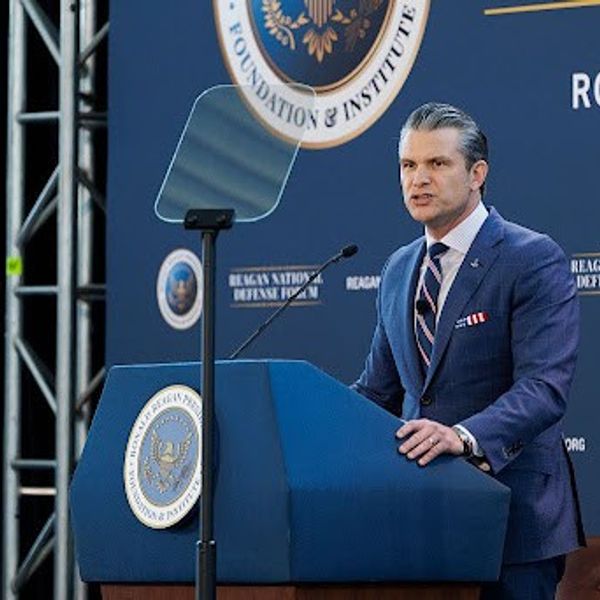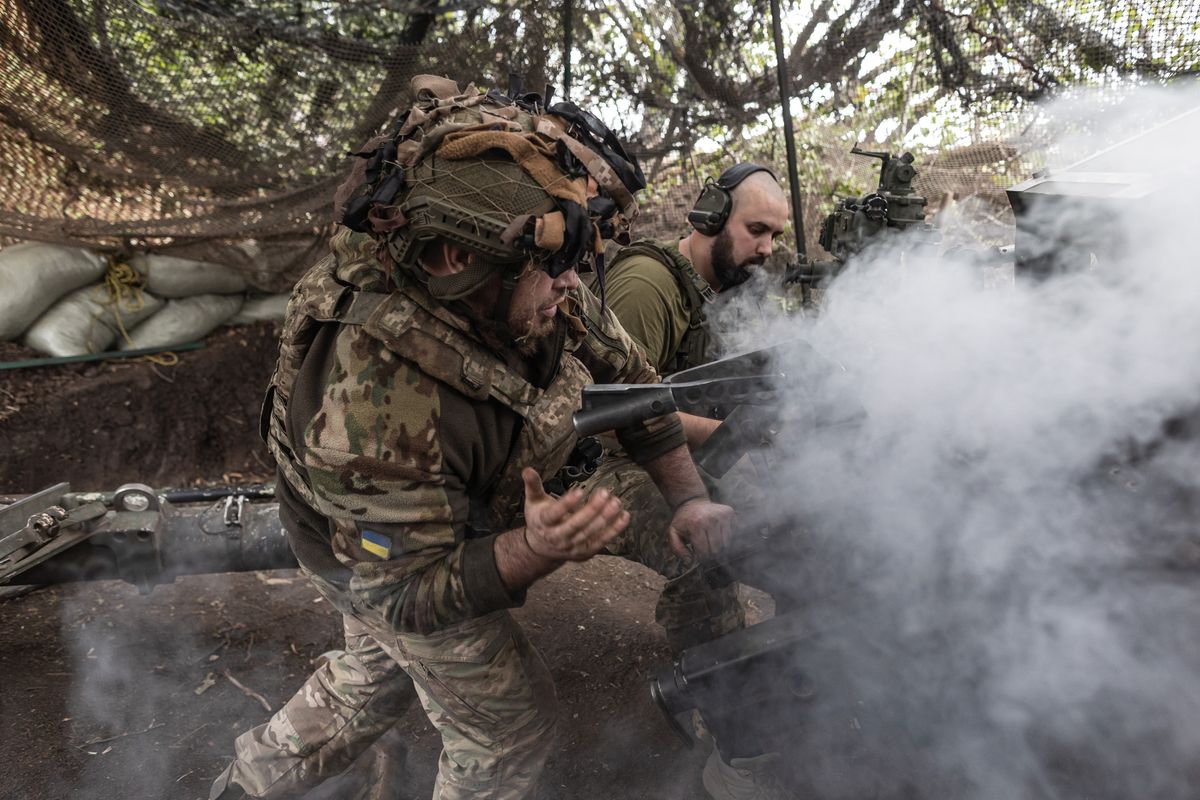The Association of the United States Army (AUSA) held a symposium in Hawaii last week to talk about Land Power in the Pacific (LANPAC).
We caught up with Cipher Brief Expert LTG (Ret.) Guy C. Swan III, who currently serves as Vice President of AUSA, to talk about the global security challenges that thousands of people in the region came together to discuss.
The Cipher Brief: Give us a bit of history on LANPAC and its core mission.
Swan: This was our seventh annual LANPAC gathering. It was started based on the ‘Pacific Pivots’ implemented during the Obama Administration. That came out of the 2012 National Security Strategy, which coincided with the draw down in Iraq. The Obama Administration took measures then to refocus on the Pacific region.
With that in mind, then Army Chief of Staff, Ray Odierno, came to our then-president, General Gordon Sullivan, and asked him if AUSA could develop a forum that would highlight the army's role in the Pacific and we've since expanded that to the Marine Corps and Special Operations as the three legs of the land power stool, so to speak.
What people normally think of as the Pacific is a lot of water and a lot of airspace. They don't think much about land and military forces that much. The region is vast. Obviously, the people live on the land and the Army has been in the Pacific for well over a hundred years, going back to the Boxer rebellion, the War in the Philippines at the turn of the last century, and all of that. This was developed to demonstrate the need for, and the role, that land forces play in the Pacific.
The Cipher Brief: If I'm remembering correctly, the Army had significantly more amphibious landings in World War II than the Marine Corps did.
Swan: The U.S. military and the U.S. Army have been engaged in the Pacific for well over a hundred years. Let me give you a couple of other things to think about. Six out of the 10 largest armies in the world are in the Pacific region. 21 of 27 Chiefs of Defense - the uniform leaders of militaries in the region - are army officers. Many of these nations don't have navies, they have coastal defense forces. In many of the nations in the Indo-Pacific region, their senior military leaders are actually army equivalents. As we started to peel this onion back with the Department of Defense, with PACOM, it was clear that the army's presence in the region was vital.
The Cipher Brief: Today, we're looking at interconnectedness in a way that we've never experienced as it relates to warfare, and at complex multi-domain operations. How does the U.S. assess its allies’ understanding of this complexity and do you believe that U.S. allies share the strategic landscape view and the impact of technology on global security and war?
Swan: That's a great question. As you listen to the Secretary of the Army, Mark Esper, and Army Chief of Staff, General Mark Milley, they will talk about three lines of operation that they're pursuing as the army moves to the future. One is sustaining and increasing readiness, the old adage of what if you have to fight tonight, maintain the readiness of the force. That that's been a high priority for them.
The second thing has been the modernization piece that you describe. The army is still living with legacy equipment from the 1980s, the big five: The M-1 tank, the Bradley Fighting Vehicle, the Apache helicopter and so forth. Those platforms have pretty much come to the end of their life expectancy. They're vastly different than they were when they were developed. We've run out of the physical capability to make these things better. The second piece of their objective is modernizing the force. That's future's command, cross functional teams, etc.
Then their third line of operation is allies and partners, from both an innovation perspective and an operational perspective. What I think the army is finding - and to your point – is that not all of our allies and partners are capable of maintaining the level of innovation that the U.S. military is, in all-area, all-domains; air, sea, land, space, and cyber. Many of them have capabilities in one or more of those domains and the thinking is, let's leverage where those partners have strengths. One example is in artificial intelligence. The British military has some very innovative programs underway that the U.S. military, and specifically the Army, is working with them on. Others may have capabilities in space or other domains. I don't think the expectation is that all of these allies and partners are on the same scale as the U.S. military in all domains. That does not mean that they're not valuable partners in specific areas. That's the approach that I think at least the U.S. Army's been taking.
Now, is there concern out there about the U.S. moving so far ahead of these countries? I think that's always been the case. The term ‘interoperability’ gets used when we can develop capabilities together that allow our militaries to become interoperable and actually reliant on one another. A classic case is the air and missile defense community, where a number of nations had purchased U.S. capabilities. Those are now networked into command and control systems that allow these multinational forces to operate collectively. That's one of the efforts that is probably the farthest along in terms of the U.S. better utilizing and partnering with allies.
The Cipher Brief: How do you view the environment amongst U.S. allies? The U.S. military, in particular the U.S. Army, has a large footprint around the world and is engaged with countries that most people wouldn't be able to find on a map. Many of these countries are getting direct support and logistical equipment and the Army's doing things that don't always relate to warfare, through providing assistance. How big of an impact do those things have on the relationship between the U.S. and its allies?
Swan: I personally have experienced in a number of places over the last 10 years or so, a warm welcome for the U.S. Army in the places where it operates. Pretty much everywhere that you have U.S. Army soldiers, they are there at the request of the host nation through some bilateral or multilateral agreement. I think, as they've always had, there is a reassurance that goes with the presence of U.S. Army soldiers. As you stated, some of these soldiers are operating in dangerous areas, often side by side with the host nation's own army. I think that is appreciated and frankly admired in a lot of places where we are putting our soldiers in harm's way, helping other armies.
From a political perspective, we live in a very tumultuous political era right now, but my experience is that the military to military relationship that operates below that political level is very stabilizing. Soldiers around the world have a common background. They have a common ethos about their role in society. These can be their population and their political leaders. These relationships are, I think, one of the stabilizing forces in a very turbulent political period.
The Cipher Brief: The U.S. has been on a counter-terrorism footing for 20 years now. Now it’s shifting, obviously, toward a different strategy that's looking back toward potentially larger force deployments again. We've just seen a recent example of U.S. force projection, as the U.S. military deployed assets to the Middle East in response to a crisis. The U.S. knows that it’s adversaries continue to try and counter the U.S.'s technological advantage. What worries you the most, where we are, where the army is today as we move forward?
Swan: I’m actually very encouraged when it comes to readiness, technology and adaptiveness. There is great progress underway. The Army Futures Command is an example of that. One of the initiatives in the Pacific region that's ongoing is the development of a multi-domain task force that's being exercised right now, which is an experimental force that's being used and deployed around the Pacific on different exercises. Those things, I think, are going reasonably well.
I'll tell you one area that you might not think of, that worries a lot of us, is people. As you know, last year the Army fell short on its recruiting goals. Are we going to get the quality people that we need in the armed forces to manage all of the things you just described and perform in a very complex environment going forward? I think on the technology side, the adaptiveness is underway, but the key to this will be good people. The Army has established a Talent Management Task Force to look at recruitment – and the old ways that you and I grew up with that carve out cookie-cutter careers where everybody follows the same career path. We don't do that in adaptive businesses around the world. They treat people more like individuals who have differing skills and capabilities, so the question is, how can we get more out of the people we have and at the same time, get the kind of people we're going to need in the future?
That's the area that I think concerns me the most. Technology is going to be a cat and mouse game forever. Some of the efforts underway in the Army Futures Command are meant to close gaps that have opened between the U.S. and the Russians and the Chinese in some areas. While we were doing counter-terrorism, those nations were focused on building sophisticated military forces. We are, to some degree, playing a little bit of catch up in some of these areas or closing gaps that have opened, still maintaining our advantage. We can do this, and it's being demonstrated every day.
The Cipher Brief: I love that we started a conversation about complexity and innovation and technology and ended it with people, because at the end of the day, it all comes down to the humans.
Swan: I'm very proud of Army leadership for not lowering their standards just to meet their recruiting goal for the year. They maintained a higher standard. It's very difficult to get in the military these days for a young person. Just three out of ten people qualify to come into the military. It was fairly courageous to take a short fall on that number for the year. The result was a scaling back of the Army's goals of growing the force. The Army wants to grow the military - and the Army - over the next several years, primarily to reduce the op tempo, so you have a larger pool, and then you can lighten the load on the people who are serving. Those goals had to be pulled back a bit, because of the recruiting challenges.
As per Army Secretary Mark Esper, he has charged every one of us that have some affiliation with the Army to become part-time recruiters. He needs people to be out there talking about their service and asking what other people’s service experience was like. We need more spokesmen for the Army in order to get the right people. We can do this. We can do this.
Read more from LTG Guy Swan in The Cipher Brief














